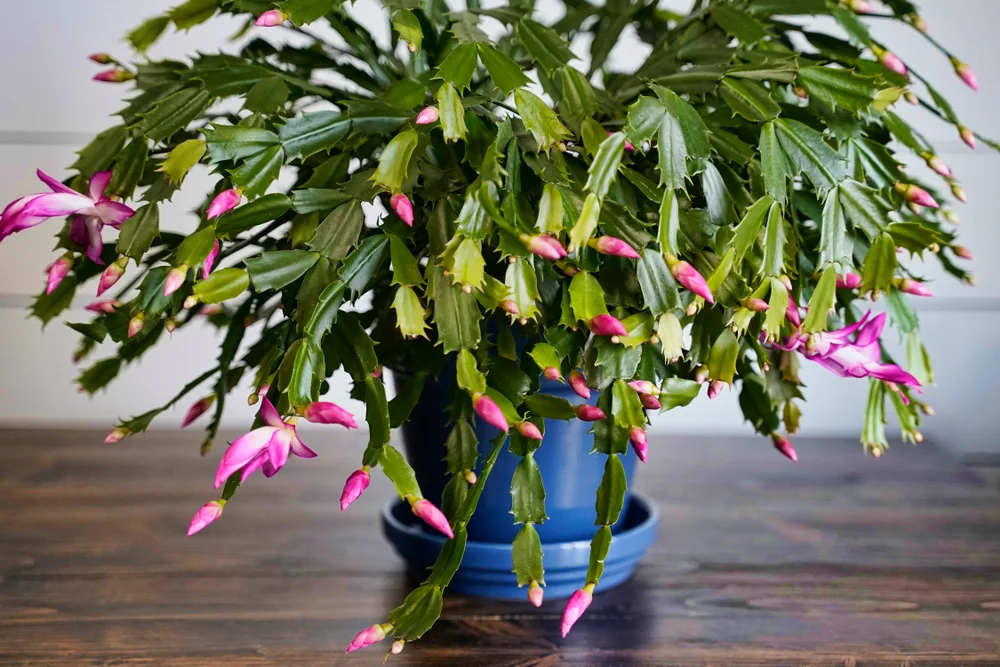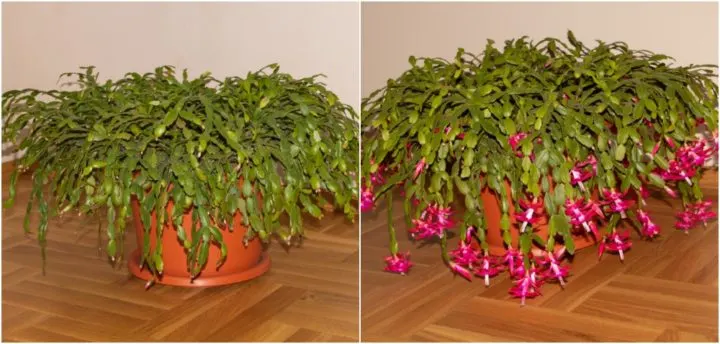Festive cacti, often a source of bewilderment for indoor gardeners, have earned a mystique that surrounds their blooming patterns. These plants, comprising the Thanksgiving Cactus, Christmas Cactus, and Easter Cactus, have left many wondering if they are fussy bloomers or if they possess their own mysterious calendar for blossoming. In this article, we will delve into the secrets of these enchanting cacti, offering insights into their identification, care, and propagation.
Understanding the Three Festive Cacti:
- Thanksgiving Cactus (Schlumbergera truncata): This cactus typically graces nurseries and garden stores in November. Its blooming aligns with the Thanksgiving season, hence its name.
- Christmas Cactus (Schlumbergera buckleyi): With its boxy form and gently scalloped sides, the Christmas Cactus is a true holiday delight, often blossoming around Christmas time.
- Easter Cactus (Schlumbergera gaertneri): Distinguished by soft, rounded segments and subtle notches on its flanks, the Easter Cactus blooms during the Easter season, adding a touch of springtime charm.

Nurturing the Festive Cacti: Despite their ‘cactus’ label, these plants lean towards tropical inclinations, originating from the lush landscapes of Brazil. Here are some tips to keep them thriving:
- Positioning and Climate:
- Place them in bright, indirect sunlight, ideally by an east-facing window.
- They thrive in temperatures ranging from 60-75°F (15-24°C).
- If you live in warmer regions, you can keep them outdoors, but protect them from direct sunlight and bring them indoors if the temperature drops below 50°F (10°C).
- Hydration Habits:
- Water thoroughly and allow the soil to dry out before the next watering.
- Ensure the roots are not submerged in water to prevent root rot.
- If humidity is lacking in your area, create a moist environment by placing the pot on a tray with water and pebbles, without letting the pot touch the water.
- Growing Medium:
- Use a potting mix designed for cacti or succulents with excellent drainage.
- Repotting is infrequent, only every few years, and choose a pot just one size larger.
- Nutritional Needs:
- Fertilize with a quality houseplant fertilizer every two weeks after blooming and monthly during the blooming phase.
Cracking the Blooming Conundrum: To encourage these cacti to bloom, mimic their natural conditions:
- Provide longer, cooler nights by shielding them from light for 12-14 hours daily.
- Maintain temperatures of 50-55°F (10-13°C) during bud formation.
- Return them to their regular spot once the buds start to appear.

Propagation Prowess: After the blooming period, you can shape your cactus by taking leaf segment cuttings and planting them to create new plants. Follow these steps:
- Use sterilized scissors to snip at the leaf segment base.
- Let the cuttings dry for a few days and then plant them about an inch deep in fresh soil.
- Water minimally until roots emerge, then resume regular hydration.
- Sharing these cuttings is a heartfelt gesture of love for these remarkable plants.
Furry Friends and Troublesome Bugs: These cacti are pet-friendly and generally resistant to pests. Be cautious about overwatering, which can lead to root rot, and adjust light exposure and hydration if you notice reddish-brown tinges on the leaves.
Distinguishing Amongst the Festive Cacti: To identify your festive cactus accurately, examine its leaf segments and blossoms. The distinctive features of each variety will guide you:
- Thanksgiving Cactus has pointy projections and an elongated, box-like structure.
- Christmas Cactus retains the boxy form with gently scalloped sides.
- Easter Cactus features soft, rounded segments and subtle notches on its flanks.
Conclusion: Festive cacti are not as enigmatic as they may seem at first glance. With the right care and attention, these captivating plants will reward you with a yearly display of colorful blooms, continuing a tradition of beauty and sharing that spans generations. Whether you’re a seasoned gardener or just starting, these cacti are gems worth treasuring and spreading the love for.

